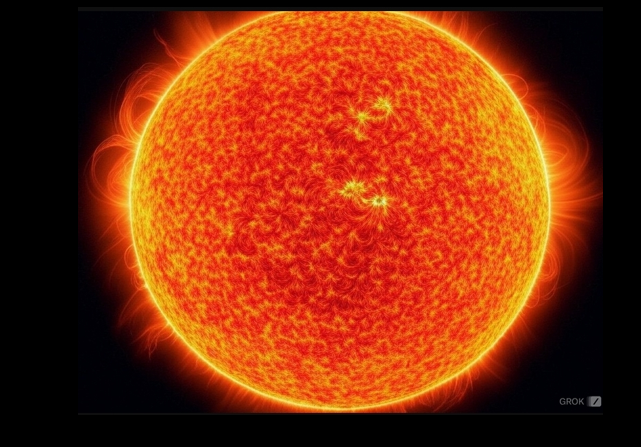Parker Solar Probe Survives its Close Encounter with the Sun
The actual data obtained by the Parker Solar Probe should be arriving on New Year’s Day, if all goes well.

On Christmas Eve, I reported on the National Aeronautics and Space Administration (NASA) groundbreaking spacecraft, the Parker Solar Probe, launched in 2018 to study the Sun’s outer corona.
It is the fastest object ever built on Earth, capable of reaching speeds up to 430,000 mph at its closest approach to the Sun…and was slated to make a historic flyby. Due to the communications limitations, NASA officials would not know if the probe survived this encounter for a few days.
Happily, this phase of the mission has been successful.
Two days after a historic Christmas Eve sun flyby that flew closer to the star than any spacecraft in history — taking the car-sized spacecraft nearly a tenth as close to the sun than Mercury — the Parker Solar Probe phoned home for the first time since its solar encounter. The space probe sent a simple yet highly-anticipated beacon tone to Earth just before midnight late Thursday (Dec. 26).
Scientists on Earth were out of contact with the Parker Solar Probe since Dec. 20, when the spaceraft began its automated flyby of the sun, so the signal is a crucial confirmation that the spacecraft survived, and is in “good health and operating normally,” NASA shared in an update early Friday (Dec. 27).
The signal was expected early on December 28th, so early messaging is an excellent way for space science to wrap up 2024.
Moving at up to 430,000 mph (692,000 kph), the spacecraft endured temperatures of up to 1,800F (980C), according to the Nasa website.
“This close-up study of the Sun allows Parker Solar Probe to take measurements that help scientists better understand how material in this region gets heated to millions of degrees, trace the origin of the solar wind (a continuous flow of material escaping the Sun), and discover how energetic particles are accelerated to near light speed,” the agency said.
Dr Nicola Fox, head of science at Nasa, previously told BBC News: “For centuries, people have studied the Sun, but you don’t experience the atmosphere of a place until you actually go [and] visit it.
“And so we can’t really experience the atmosphere of our star unless we fly through it.”
The actual data obtained by the Parker Solar Probe should arrive on New Year’s Day if all goes well.
The data will help scientists study various aspects of the sun, including the origin of the solar wind, a stream of particles that creates a protective bubble around the solar system.
Parker’s data will also help scientists understand how the sun’s outer atmosphere, known as the corona, can be hundreds of times hotter than the solar surface below it.
“It’s like if you were standing next to a bonfire and you took a couple of steps back, and all of a sudden it got hotter,” Dr. Westlake said. “It just doesn’t make any sense.”
Parker isn’t quite done yet. It has two more solar flybys to accomplish at the same altitude as this one before the primary mission comes to an end in September.
But scientists are hopeful the mission will be extended a few more years, at least to close out the solar cycle.
Parker Solar Probe has made history.
After seven days of silence, Parker has resumed communication with Earth, confirming it’s healthy after soaring just 3.8 million miles from the solar surface — the closest a human-made object has ever been to a star.https://t.co/YgLBDsRlGy pic.twitter.com/UMCNq0BzhA
— NASA Sun & Space (@NASASun) December 27, 2024
 DONATE
DONATE
Donations tax deductible
to the full extent allowed by law.









Comments
You only have to reach 67,00o miles an hour and the rest is free from falling downhill into the sun.
As long as you only plan to fly into the sun and be destroyed, 67k mph is fine. If you plan for anything like what they pulled off, you need much higher speeds, and the correct orbital path to pull off a gravitational slingshot.
Math is involved.
That takes less than 67,000 mph, not more. 67,000 mph gives you the highest speed, cancelling out all your angular momentum around the sun.
I told you sending it at night would work
Fantastic story! Reminds me of Trump who survived his close encounter with the enemies who were trying to destroy him.
“That’s because it went at night…” -AOC